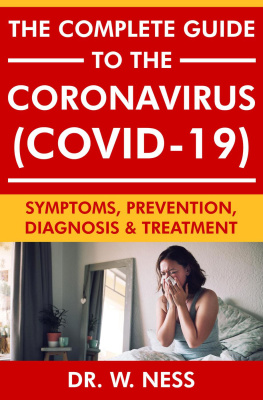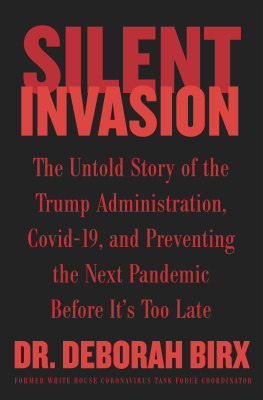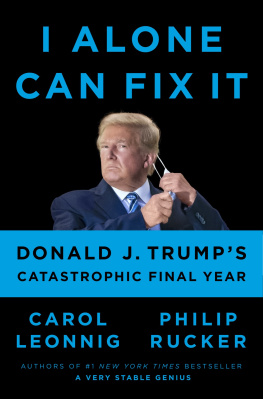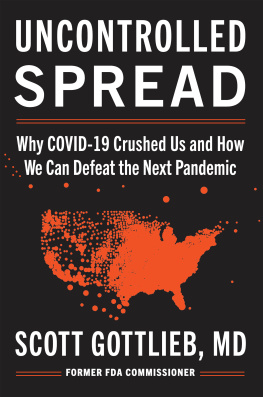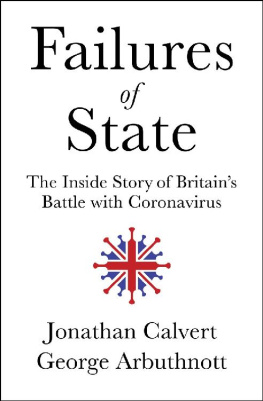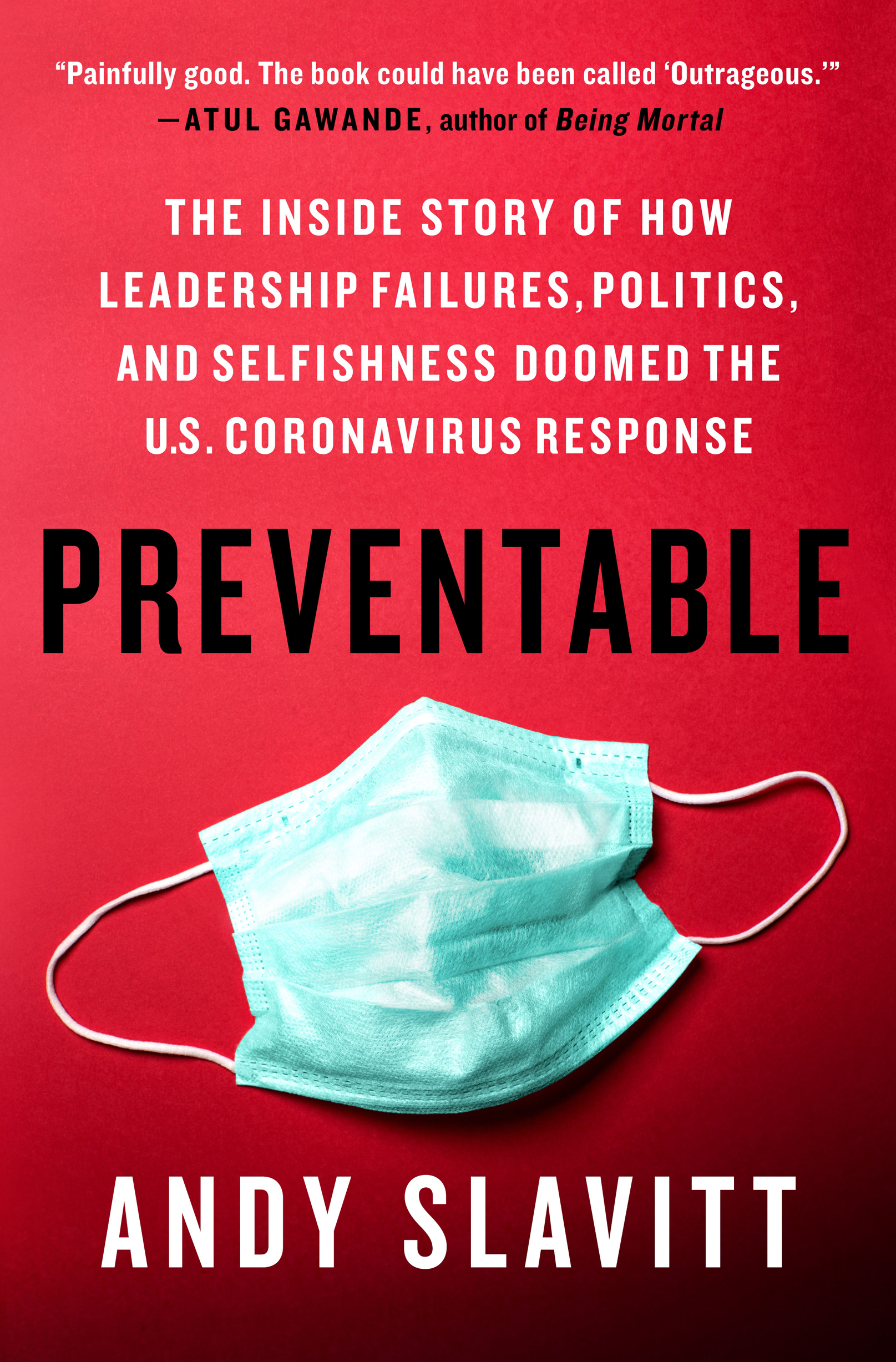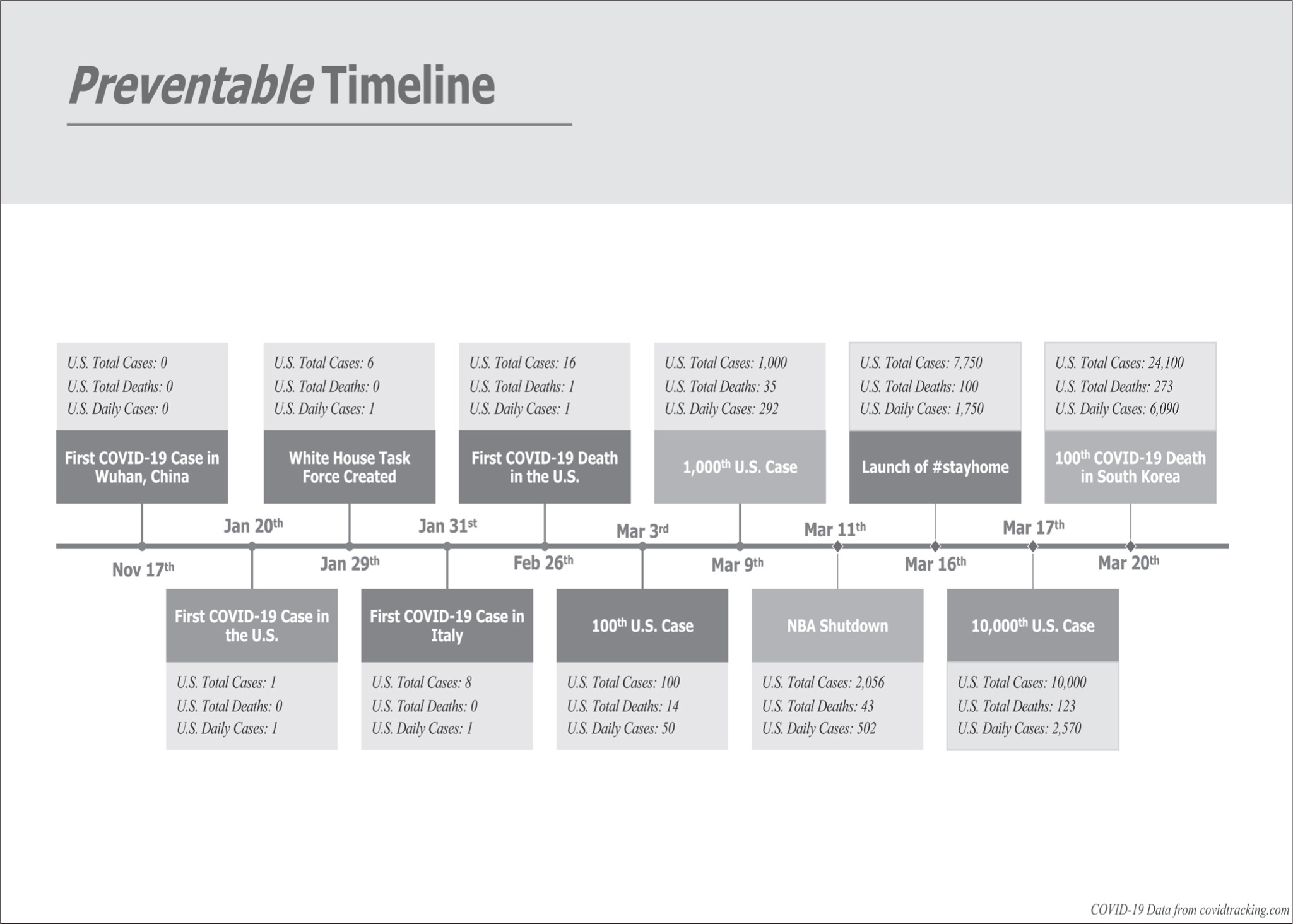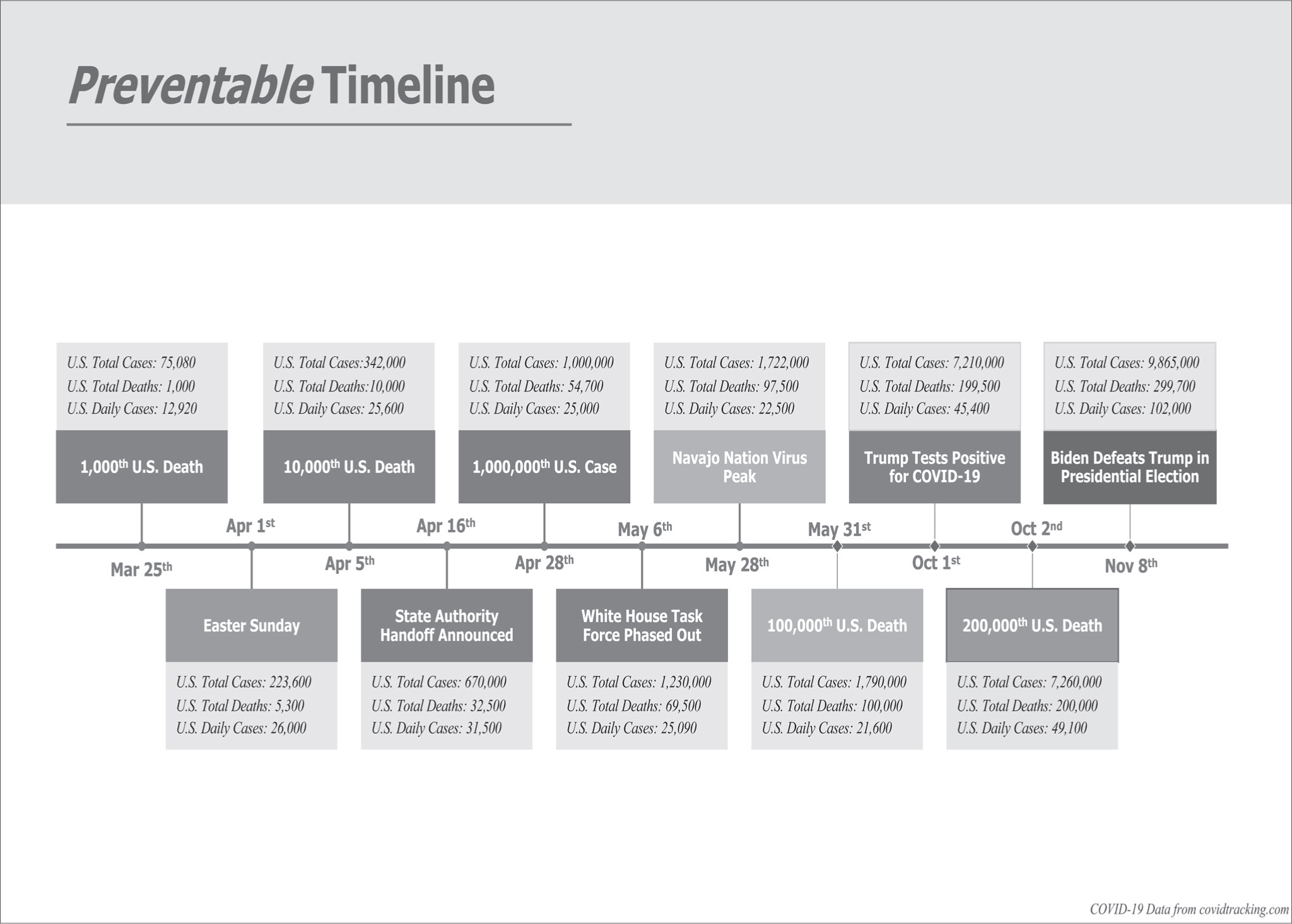The author and publisher have provided this e-book to you for your personal use only. You may not make this e-book publicly available in any way. Copyright infringement is against the law. If you believe the copy of this e-book you are reading infringes on the authors copyright, please notify the publisher at: us.macmillanusa.com/piracy.
To our career civil servants, who serve this nation with honor and skill, and to every health care worker who cared for us, who held a hand, cleaned a room, and absorbed our losses.
And to my wife, Lana, who has taught me how to work for what matters, all while giving me true happiness. She also helped create two wonderful humans, Caleb and Zachary. I hope we give them what my parents gave me.
In February of 2021, I was at my desk in the Old Executive Office Building, a couple of hundred yards from the West Wing. I was three weeks into my new role as White House senior advisor for the COVID-19 response and starting my fourth Zoom call of the day. Thousands of Americans were dying daily. The country was in desperate need of some good news after the yearlong pandemic.
A few minutes after the call started, my cell phone rang from an unlisted D.C. number. I hadnt been through an uninterrupted call in the last three weeks. I silenced it.
My phone rang again. This time I picked it up. It was the presidents assistant asking if I could come to the Oval Office for a meeting already in progress. I grabbed a notebook and half-jogged to the Oval, where I found President Joe Biden, his chief of staff, Ron Klain, and Jeff Zients, the COVID-19 response czar, in the adjoining dining room. Biden motioned for me to join them at the table.
Tell me whats going on in a way a junior in high school would understand it, he said to the three of us. The global pandemic had been gutting the country for the past yearupending and ending lives, shutting down businesses and causing job losses, and sparking a national identity crisis for a nation that considered itself above many of the worlds problems. Bidens promise to the American people to lead us out of the pandemic was one of the reasons he was sitting there. Helping deliver on that promise was the reason I was there as well.
Ron, Jeff, and I told him that for many of the questions the public wanted answers tolike when the pandemic would be overthe answers were as yet unknowable. We had estimates, plans, and models, but that was all they were. And after a year of the Trump administration promising that the pandemic was about to end at any moment, the public had grown fatigued and distrustful.
We dont know is a perfectly acceptable answer, the president said. Lets give it to people straight. With nearly 500,000 American lives already lost20 percent of the worlds deaths from COVID-19, though we had only 4 percent of the worlds populationhe said he wasnt interested in what made him look good, just straight facts he could communicate to the public. No games, just the truth.
This was another reason President Biden was sitting there; his sensibility was 180 degrees from that of his predecessor, Donald Trump. I had spent the past year watching the pandemic ravage the country from an unusual seat, on the phone with the Trump team, state officials, scientists, members of Congress, and others at the center of this storm, pushing for actions to improve our response to the crisis. I had become part-time helper, part-time critic, and full-time public chronicler. Seven years before, Id had my own experience leading a large-scale national rescue effort, first from outside the government, then from inside it. I was one of the few peopleand certainly one of the only Democratswho was talking to the Trump White House on a regular basis during the first year of the pandemic, and I had developed a clear understanding of what was wrong with their response.
The White House in 2020 was not led by a man I respected or trusted. At the outset, that hadnt deterred me. After all, the color of your T-shirt shouldnt matter during a global pandemic. But this was the White House of Donald J. Trumpa man whose ego wouldnt allow him to acknowledge a problem like the novel coronavirus emerging on his watch. All the things he would have needed to dobeginning with taking accountability, managing a large-scale response, calling for unity, and relying on experts and institutions of sciencewere anathema to him.
Still, I tried. I contacted Jared Kushner, the presidents son-in-law and senior advisor, to offer my assistance, and spent the year on the push and pull of an effort to save lives and prevent even more colossal mistakes. Despite a few successes, when it came to dealing with the White House I generally found myself fighting the forces of denial, blame, and a short attention span that only blew more life into the pandemic. I put more energy into working with governors, mayors, private companies, and scientistsanyone who needed help or could lend a hand. I also began to publicly document what I was seeing every daynot just for myself, but for the publicin a nightly Twitter tweetstorm and in national publications that became a mainstay for many Americans seeking insight into what was happening. I made frequent TV appearances and started a podcast with my bright but bored 18-year-old son, Zach. My views were not formed by what I read in the paper, but from regular conversations with medical providers on the front lines and a whole host of people who would become principal players during the pandemic: people inside the Trump world like Anthony Fauci, Deborah Birx, and Kushner; governors in a dozen states; leading pandemic and scientific experts; and organizations that were centralor at least should have beento defeating the pandemic.
I also began to write this book, which I came to call Preventable. This is a story full of missed opportunities, willful neglect, and indifference and denial from our president. But the countrys experience during the pandemic is also a culmination of many of the things that had begun to distort our society for a number of years gross inequality based on race and income, the growing distrust of expertise, a media addicted to promoting controversy, and a people long out of the habit of shared sacrifice for the common good. So many Americans did not have to die. Some of our mistakes could have been avoided had we had a different and better leader. Others were more deeply rooted in our American identity; those are more challenging to address and may be even more important to fix as we move forward.
This book is not meant to be full of sage commentary and policy prescriptions. Instead it follows the stories of some of the key people and events at the center of the crisis. Once you see what I saw, I think the lessons will emerge pretty much on their own. The solutionswell, thats another matter.
A few weeks after wrapping up the book, sometime between Christmas and New Years Day, I received a call from the Biden team asking me to join the White House to help lead the pandemic response in the new administration. The crisis was raging and the newly authorized vaccine rollout was in trouble. Meanwhile, the normal transition of government was being hobbled by Trumps refusal to acknowledge the election results and his attempt to overturn them. Given the gravity of the challenge, I decided to say yes. It wasnt the first time I had been asked to help the country through a dire situation with an uncertain outcome. A quick digression will help explain how I came to be involved in this story.


